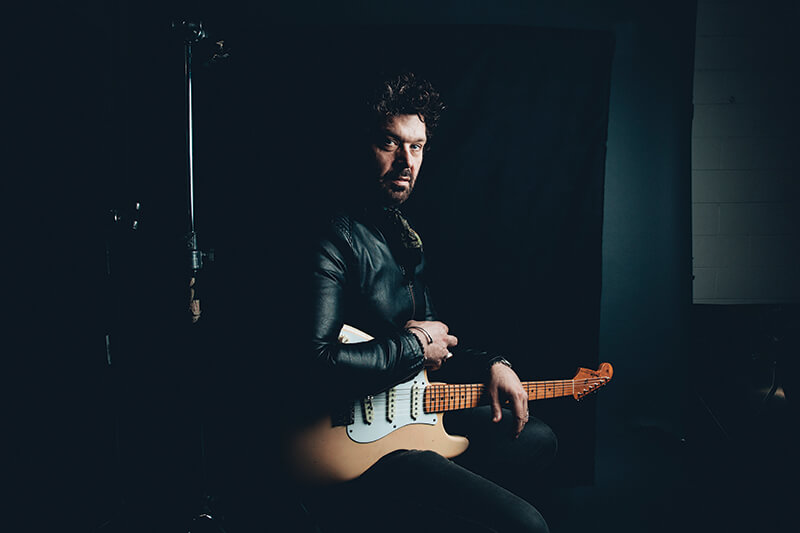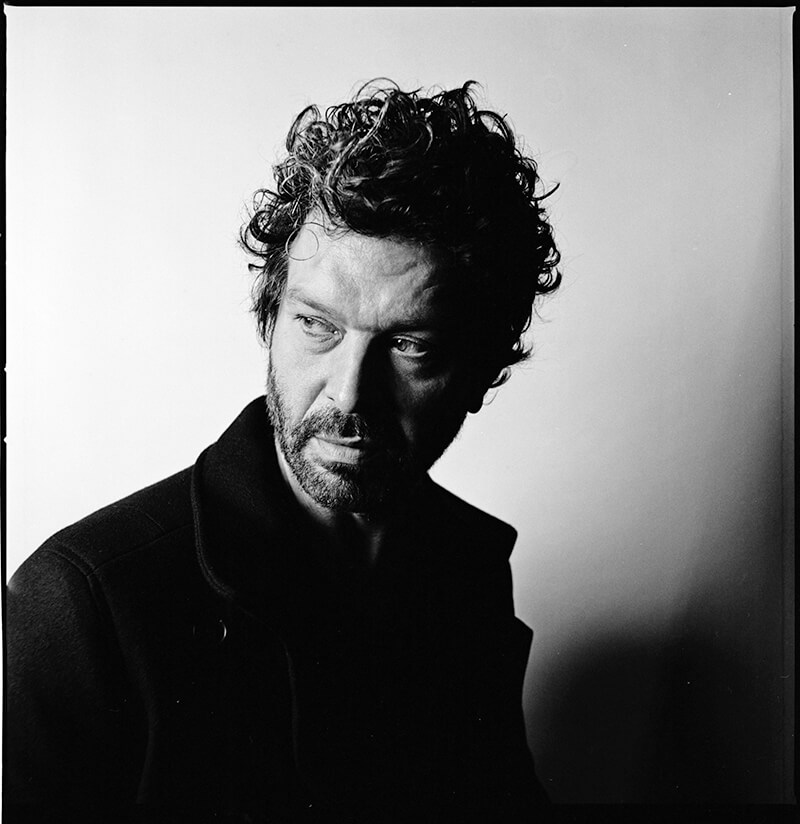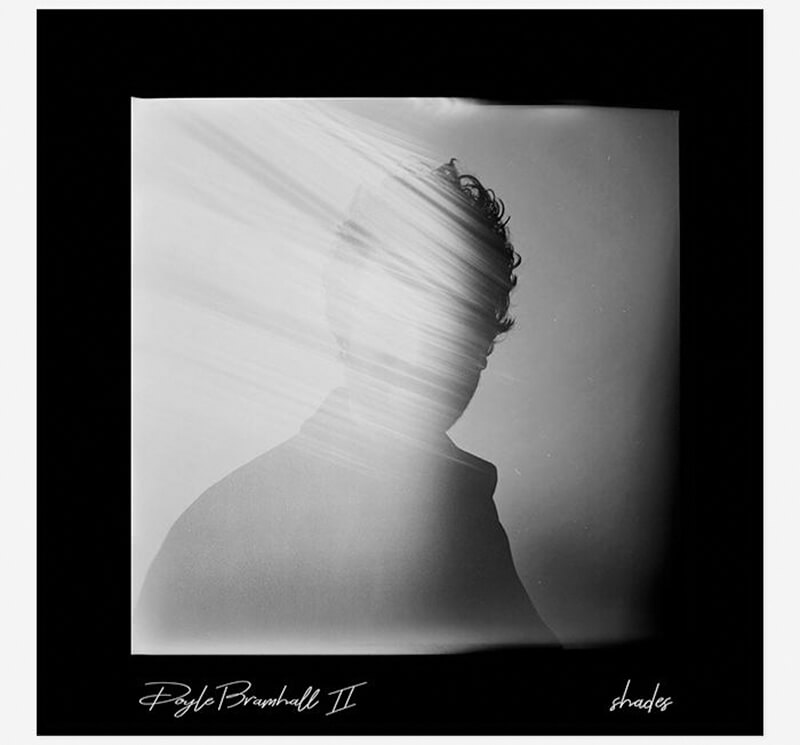The Famed Sideman Returns With a Blazing New LP & Discusses His 20+ Year Journey in the Music Business
Doyle Bramhall II is a uniquely talented musician who has worked with everyone from Eric Clapton and Erykah Badu to Meshell Ndegeocello and Elton John. Over the past two decades, he has toured the world, played on top of a historic landmark and performed on several Grammy nominated albums. I had the opportunity to speak to Bramhall about the various sounds on his newly-released LP, Shades.
You’ve got a new album out called Shades. How did that come about? When did you start the recording and production process of the album?
I was touring so much and felt like I was in the zone with my playing. The band had been on the road for a long time and felt like we were flowing musically, like I really had come into my own as a performer. Also, as a spokesperson and bandleader and I just wanted to capture the flow of the feel of the road with the band. I wanted to capture that specifically in the studio because the last record I made Rich Man was after I took time away from my solo career…it was for a good reason at the time.
Rich Man was the breaking of the ice of just getting something out there and figuring out what direction to go in. I had to ask, what was going to be the new sound I would offer?
Who played on the album Shades? Who was the personnel?
Well it all started at a studio in Hamburg after being stranded in the U.K for a week or so. Some shows had fallen through, so I decided to pack the band up and move [to Hamburg] for a while. It was cheaper there – we had a friend with a studio/apartment and we could live and rehearse in the studio. The two songs that came out of that of the Hamburg sessions were “Parvanah” and “She’ll Come Around.” But back to the question, it was Adam Minkoff on drums and Tom Pekoff on bass, that was the touring band of three years. Adam Minkoff has now switched to bass/keys for live performance, but yeah, I used those guys on the Hamburg sessions. When I went out to California, I used a whole other set of musicians. One being Chris Bruce on guitar and he played on “Welcome,” Carla Avar who plays with Jack White and Autolux, Abe Rounds on drums. In LA, there were usually double drums and guitar, bass.

DOYLE BRAMHALL II
Let’s talk collaborations. You’ve worked with Jimmie Vaughan, Roger Waters, Eric Clapton, Trucks & Tedeschi band, Meshell Ndegeocello, just to name a few. How did all these collaborations come about?
I would play on a record and then play myself into another situation. For instance, I met Derek Trucks when I was playing on Susan Tedeschi’s album in 2004 and she had already been a fan of mine and familiar with my work. During that session, there was one song Trucks played on and I became immediately intrigued with his playing. I was blown away that he could make a six string sing like some sacred steel instrument. Around the same time, when Eric Clapton was putting a band together, he was looking for a slide player and I said I know a guy that would be perfect. But in terms of collaborations, just playing and being introduced to people is how it happened. That’s the way it’s naturally happened for me; each time I would go play on a record, become a fan of that artist and subsequently be introduced to other artists.
You collaborated again with Eric Clapton on your new song “Everything You Need.” How did you get him to record with you on that track?
I just asked…it was literally that easy (laughs). We’re really good friends anyway – when I was recording the track, I listened back to it and thought to myself how cool would it be to have Eric play on it — it sounded like something he would play on anyway so I called him up and he said, ‘I’m recording right now in the Midwest and if you can make it, we got a deal.’ I booked a ticket and flew out to Columbus, Ohio, went right in, we cut the track, had a couple cups of tea, you know, the usual deal. I’ve always been a jet setter so taking a plane from LA to Columbus is nothing.
Let’s talk lead guitar for a minute. What inspired the backwards/reverse lead guitar on “Love and Pain” and what gear did you use for that song?
That was sorta just something melodic — I knew I wanted something melodic, but also chaotic. I played a few different solos, actually played like 15 solos and couldn’t find it. I just couldn’t get inside it and wasn’t expressing what I wanted to be happening emotionally. The reversing of the guitar was kind of like a last Hail Mary. And as soon as we did, it was like THAT’S the sound. But I had to play it again over and over another 7 or 8 times until I figured out the movement. The last take I feel like I had finally nailed it.
My favorite songs by you are on the album Welcome. There’s a song called “Problem Child” and it has one of the best guitar duels I’ve ever heard. Can you give us the backstory on that track?
That whole record I had finished all the songs prior to recording tracks. I had been playing in Tom Petty’s band and Jim Scott was the producer of Welcome and he did a few Petty albums, as well. Ben Marks helped to co-produce that record and Jim and Ben’s big thing were to get the songs as tight and well-rehearsed as possible [before recording]. So that track “Problem Child,” we only had to record it a few times because we were so well rehearsed. The song just kinda kicked ass from the gate because we had all been in a rehearsal space for about three weeks. We had rehearsed all the songs until we had them down by heart.

DOYLE BRAMHALL II
You’re also an amazing vocalist. Did you take vocal lessons or have a teacher? Or are you formally trained at all with music?
My voice has never been stronger until now; I don’t know what happened. I guess it just started to get better, the more I sang and kept performing in front of crowds. But in the beginning when I made Welcome and Jelly Cream, I could not sing more than two notes in a row and could do maybe a 90-minute set and then my voice would be shot. Now I can play six nights a week, do two-hour shows and my voice will be fine.
How long are you going to tour behind the new record and where are you traveling to?
I had some shows in Berlin where I’m currently at. I’ve been on a small European tour for the past few weeks. After this, I fly back to the States and do rehearsals with Eric Clapton for a couple shows at Madison Square Garden. After that, doing non-stop radio shows and performances to promote Shades. But other than those two Clapton shows, I’ll be touring with my band until the end of December. Then the coolest thing, at the end I’m going to be turning 50.
There was a point in your solo career when it was dormant and as an artist, you fell off the map for a bit. There was more than a decade between Welcome (2001) and Rich Man (2016). What did you do during that time period?
I was playing with different artists at the time and was just really enjoying playing. I started out as a solo artist in 1999 and then played with Roger Waters for a year, then went from doing that to making a record with Clapton. There was a lot going on, I was touring at the same time on my own, but also making records with Eric and then Eric asked me to join his band in 2004. It seemed like it was perfect timing for me; it was always an honor to make records with him. His band was so good too at that time; he had Billy Preston in the band and the opportunity to play with Eric was an incredible learning experience.
So, I was just having the time of my life and also raising my daughters; it was the perfect scenario. I was able to make music, be creative, tour with Eric and be his right hand guy. At that time, it was very fitting…I had said I didn’t want to be a part of the “industry” anyway. I just felt like I wanted a way to express myself creatively and not be forced into politics.

Let’s talk about one of the high points of your career. In 2006, you played the Great Wall of China with Mike Elizondo (producer/writer, Eminem and Dr. Dre) and JJ Johnson in front of hundreds of thousands of people. How did that gig come about? It sounds like a monumental experience!
It was actually set up by a fan of mine who was also a musician in Texas. I guess he used to go to Arc Angels shows and he was a big fan of mine. He was also sort of a business guy and promoted concerts. He put together a show called Wonders of the World and had a bunch of different acts playing at different wonders of the world. It was an interesting show with kind of weird lineup – it was me, Cyndi Lauper, Alicia Keys, and Boyz II Men. The next show was at the Alamo and that was Gipsy Kings, Arc Angels and Los Lobos. But I think that guy just wanted to put together these really cool and interesting concerts and it turned out very well. My gig there was the first western show or act to be performed at the Great Wall.
Your father was a famous drummer and singer/songwriter. He wrote a couple tunes for Stevie Ray Vaughan that were featured on Texas Flood and Sky is Crying. Coincidentally, you also played for his brother Jimmie Vaughan when you first started out. During that period, did your father impart any music business advice to you or provide any kind of direction?
You know, we’d always talk about different things musically. He would usually introduce me to people he thought could take good care of me and provide proper guidance. And he did introduce me to some paramount people that still help me to this day, like my music publisher (BMG Music/Chrysalis). I’m still with them and have been with the company since I was 18. So yeah, my dad would take care of me in that way — if I would ask questions, he would tell me what he knew. Like he would tell me to protect and copyright my work and about music licensing, and then basic stuff about rhythm and drum skills. He would tell me what his experience was as a professional drummer and solo artist. But yeah, you’re right, growing up with my dad being a drummer, I do have a standard for shuffle beats (laughs).
What is some advice that you would like to give to young musicians who are looking to do what you do?
I would say just find what your voice is. Find what your style is or come up with your own style. Take all the influences that you have and gather them together, learn how to say things that ring true for you. Find what your story and your voice is – find it because it is unique to you and that voice is what makes your unique to the world.
photos by Alysse Gafkjen
